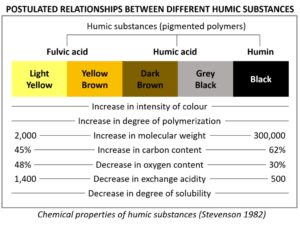The quality of humic and fulvic acid can vary greatly per supplier. Many types of humic acid are sold. The effects can be different due to, for example, the composition and/or age of the humic acid. Our humic acid has the following positive properties:
Humic and Fulvic acid From BioAg Europe
The quality of humic acid
The quality of humic acid can vary enormously. The definition of what constitutes humic acid can differ from supplier to supplier. Some suppliers consider humic acid and fulvic acid to be one and the same substance. A rule of thumb to determine the quality of humic acid is the following: The darker the colour, the more minerals bind to it. A dark colour indicates the richness of the humic acid.
We all ingests fulvic acid and humic acid through our food. However, the use of artificial fertilizers, pesticides and herbicides and the age of agricultural land, the humus layer is slowly but surely extracted from the soil. As a result we ingest less fulvic and humic acid through natural channels – our food.
Fulvic Acid from BioAg Europe
Different types of fulvic acid are offered and the name is used very lightly. Often a product is offered as fulvic acid that still has many elements bound to it. This can be judged by the taste and color. Pure, unbound fulvic acid is tasteless and has a golden yellow color. Our fulvic acid has the following properties:
The quality of fulvic acid



